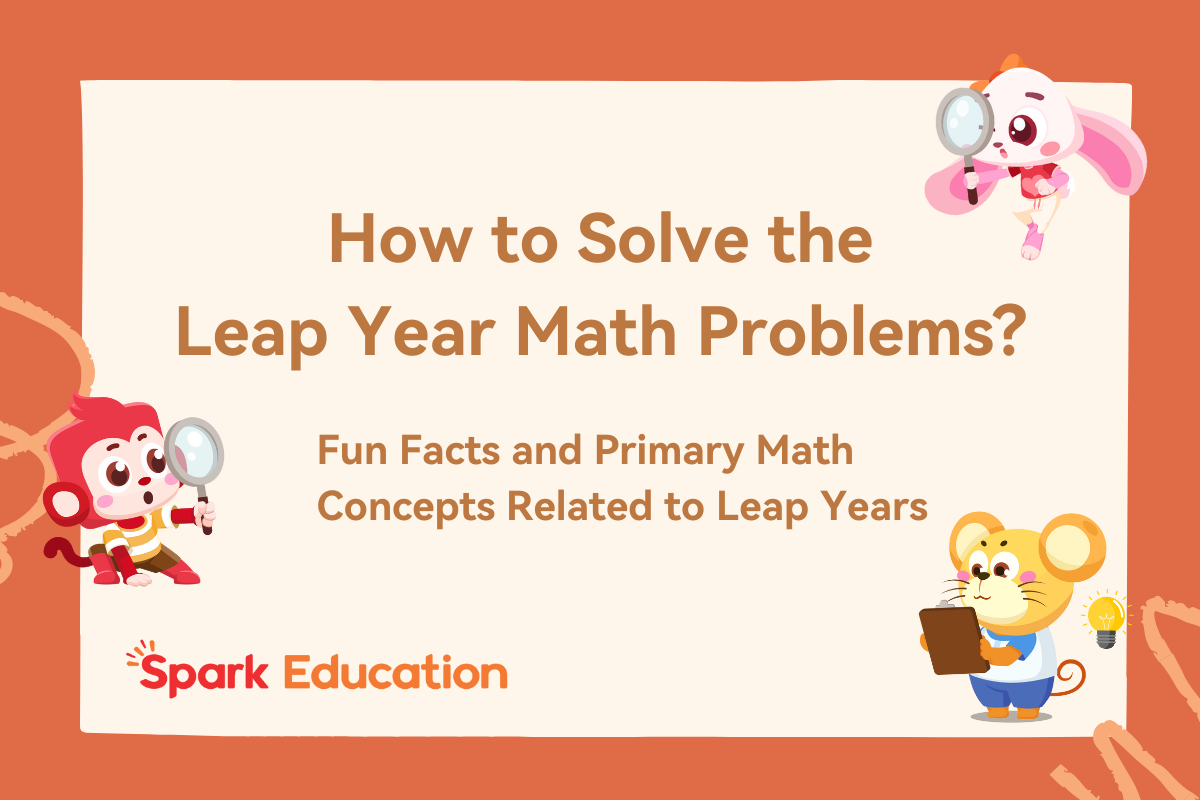
What’s the common thread among years 2020, 2024, and 2028? They’re years when the U.S. elects a President, when the summer Olympics happen, and they’re Leap Years!
At Spark Math, we believe in making math meaningful and engaging for your child, and of course, we won’t let this special chance pass us by! Check out the fun math facts below, and stay tuned for our themed math worksheets.
What is a leap year?
A leap year is a special year that has an extra day added to it — February 29th! It happens almost every four years.
In a regular year, when you count all the days from January to December on a calendar, you’ll find 365 days. But about every four years, February gets one extra day, making it 29 days instead of 28. This special year, with 366 days instead of the usual 365, is called a leap year.
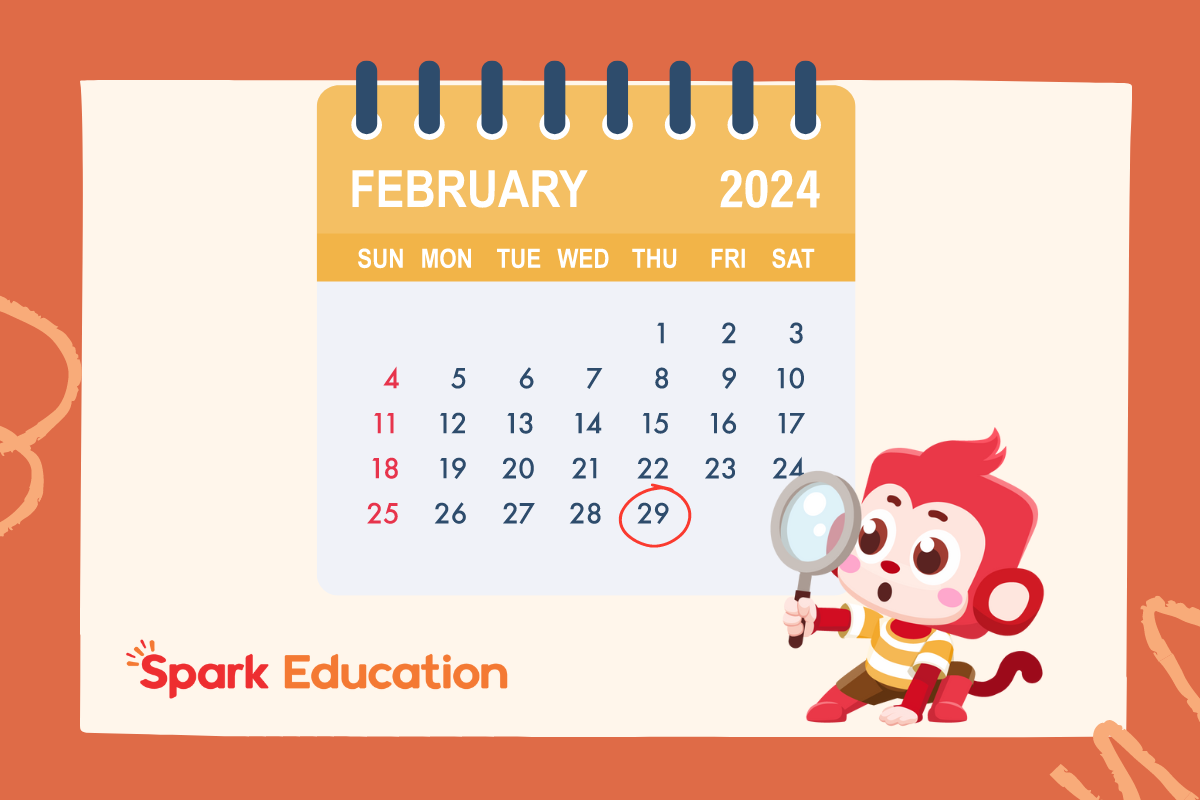
Why do we have leap years?
Earth takes 365 days 5 hours 48 minutes and 56 seconds to go around the Sun once. A single rotation of Earth on its axis, known as a day, takes roughly 24 hours. Although our year isn’t exactly 365 days long, we round it down to 365 for convenience. However, those extra 6-ish hours — or ¼ of a day — doesn’t disappear. To accommodate this fractional day, we add an extra day to February approximately every four years to make sure everything stays accurate. That’s why we have leap years!
How do we calculate leap years?
Did you know that leap years does NOT ALWAYS happen every four years? We have to factor in the special rule for century years to make sure our calendar is just right. Here’s how it works:
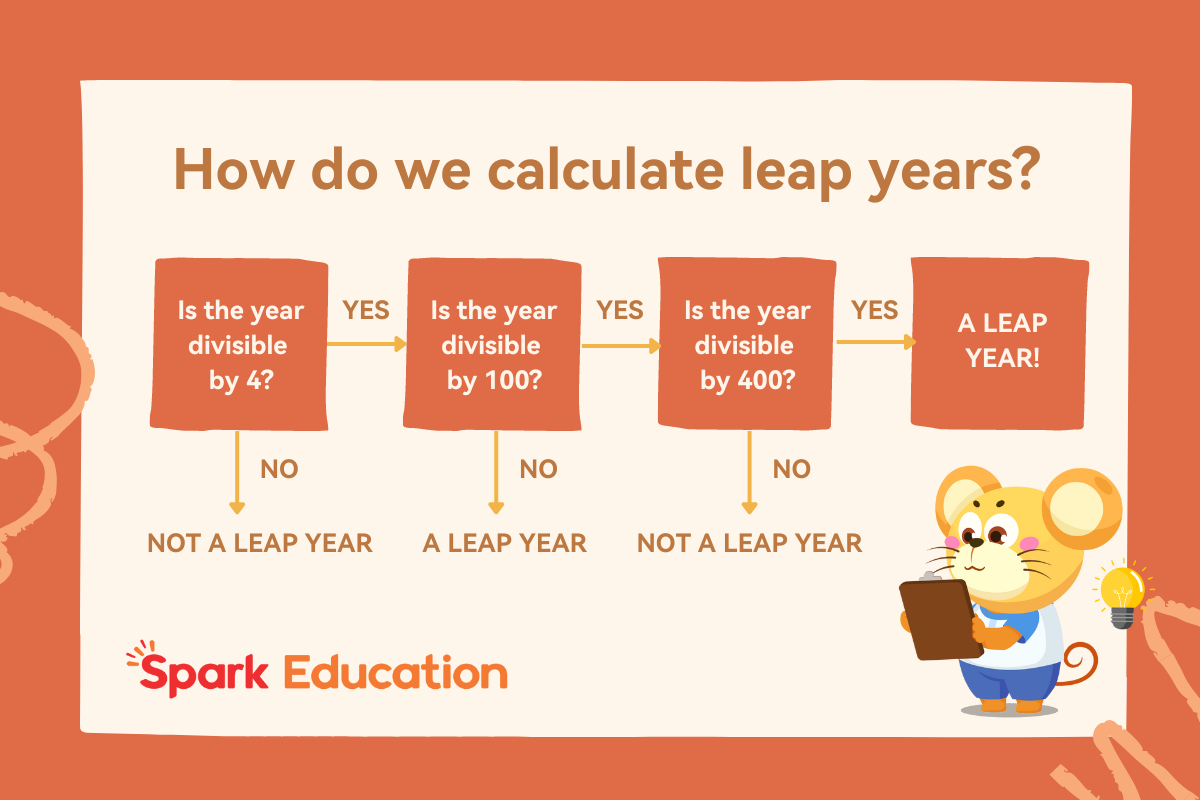
- Divisibility by 4:
First, we check if the year can be divided evenly by 4. If it can, it is likely a leap year. - Exception for Century Years:
Then, we have to check if the year is a century year, which are years divisible by 100. A century year is a leap year only if it’s also divisible by 400. If a century year isn’t divisible by 400, we skip it. - Result:
If a year passes both of these tests (divisible by 4 and either not divisible by 100 or divisible by 400), then it’s a leap year. Otherwise, it’s not.
For example:
- 2020: Since it’s divisible by 4 and not by 100, it’s a leap year.
- 1900: It’s divisible by 4 and 100, but not by 400, so it’s not a leap year.
- 2000: It can be divided by 4, 100, and 400 evenly, so it’s a leap year.
Is year 2024 a leap year?
Here are the steps to check if the year 2024 is a leap year:
Step 1: Check if the year is divisible by 4.
2024 ÷ 4 = 506 (with no remainder)
Since 2024 is divisible by 4, we proceed to the next step.
Step 2: Check if the year is divisible by 100.
2024 ÷ 100 = 20.24
Since 2024 is not divisible by 100, so it is not a century year. So, we conclude that 2024 is indeed a leap year!
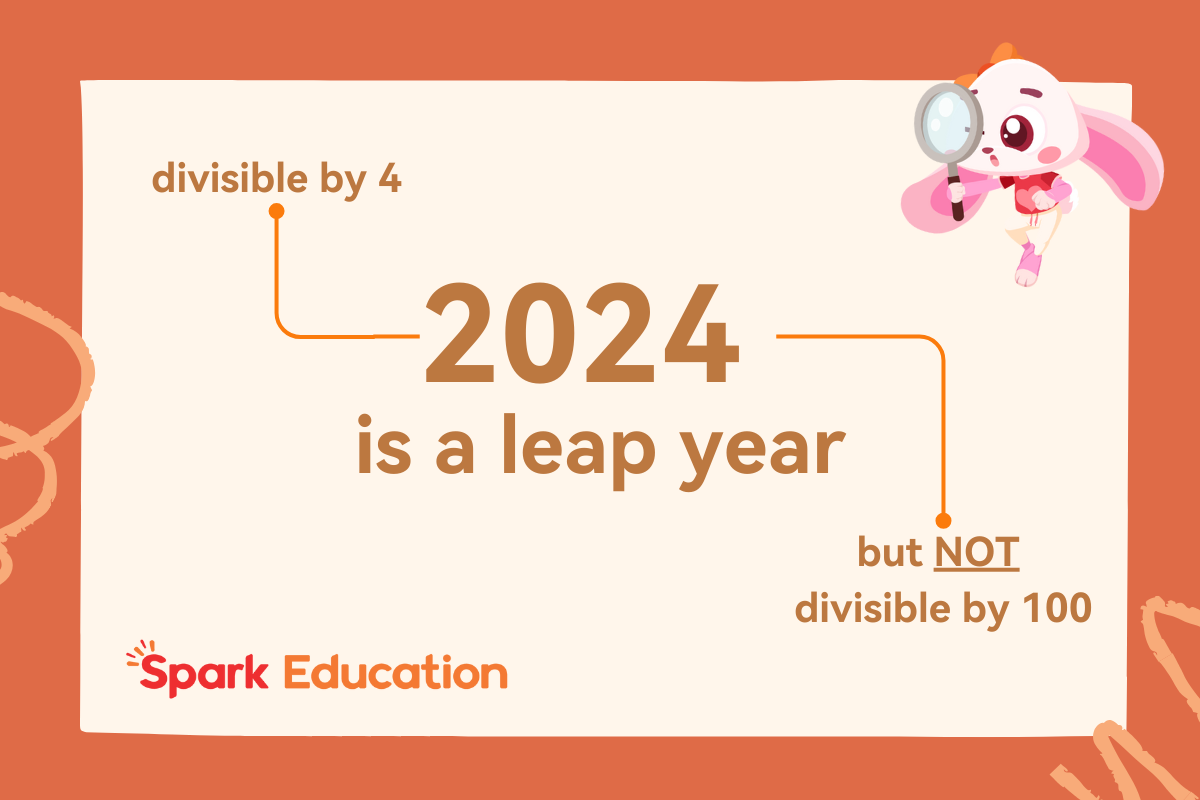
Why aren’t leap years always every four years?
Well, it’s a little bit tricky! When we add an extra day — or 24 hours — to the calendar every four years, it helps keep our calendar in line with how long it takes for the Earth to go around the Sun. But here’s the thing: the Earth’s trip around the Sun isn’t exactly 365.25 days. It’s actually a tiny bit shorter—about 23.262222 hours shorter, to be exact.
So, even though we add a leap day every four years, it makes the calendar a little longer than it needs to be. Over time, all those extra minutes would make the seasons go out of order on our calendar! To fix this, the scientists come up with a special rule: if a year is divisible by 100 but not by 400, we skip the leap year.
For example, the year 2000 was a leap year, but the years 1700, 1800, and 1900 were not. And guess what? The next time we’ll skip a leap year is in the year 2100! It’s like a little adjustment to keep our calendar running smoothly.
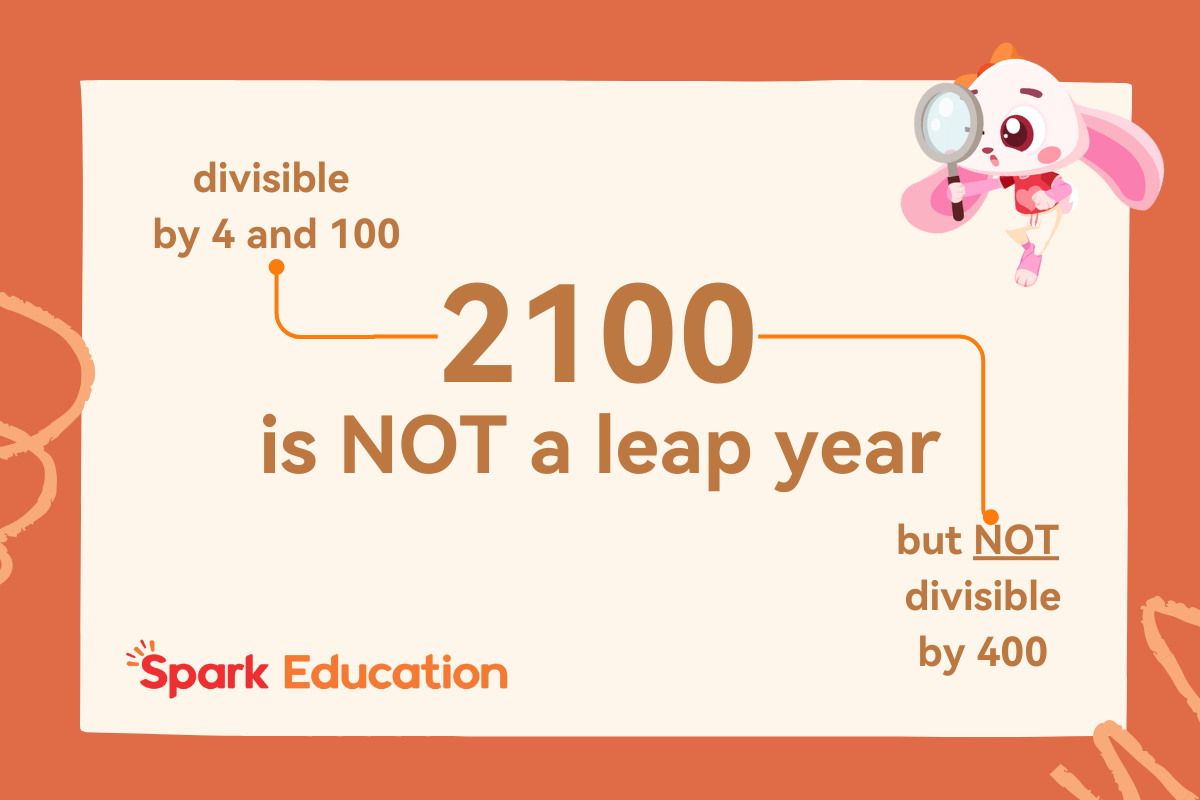
Primary math concepts related to leap years
Leap years provide an excellent opportunity for hands-on learning and practical application of basic mathematical concepts.
- Counting by Fours
Leap years occur every four years. This simple concept is perfect to introduce young children to the idea of skip counting by fours. You can play games where they count objects in multiples of four, like 4, 8, 12, 16, and so on. Then, challenge them with counting exercises, reinforcing the pattern of leap years (e.g., 2020, 2024, 2028, etc.) to reinforce the pattern of leap years. - Division and Remainders
Determining leap years involves a simple rule: if a year can be evenly divided by 4, it’s a leap year, except for years divisible by 100 but not by 400. While this rule might seem tricky at first, it’s a fantastic opportunity for your child to practice division and understand remainders. - Problem-Solving
“If Benny was born in 2016, in which year will he celebrate his next leap year birthday?” Real-life scenarios involving leap years, like figuring out when someone will celebrate their next leap year birthday, encourage critical thinking and the application of mathematical concepts. - Calendar Skills
Understanding leap years enhances your child’ calendar skills. They learn to identify patterns and make predictions about future dates. This strengthens their understanding of time and sequences, helping them become more confident in reading and interpreting calendars.
Explore the world through Spark Math
Understanding leap years shows us how math connects to everything around us. Math helps us understand the Earth moves in space and how great scientists build the calendar system to keep track of time.
At Spark Math, we are passionate about empowering children with the knowledge and skills to explore the wonders of our universe. Our teachers is committed to inspiring a love for learning and discovery that will last a lifetime.
Spark Math by Spark Education classes are for children ages 3 to 11. Find out how Spark Math equips your child with the skills they need to successfully tackle math problem sums in a fun and efficient way. Get started with our FREE interactive Math Assessment today and receive a detail learning report!




